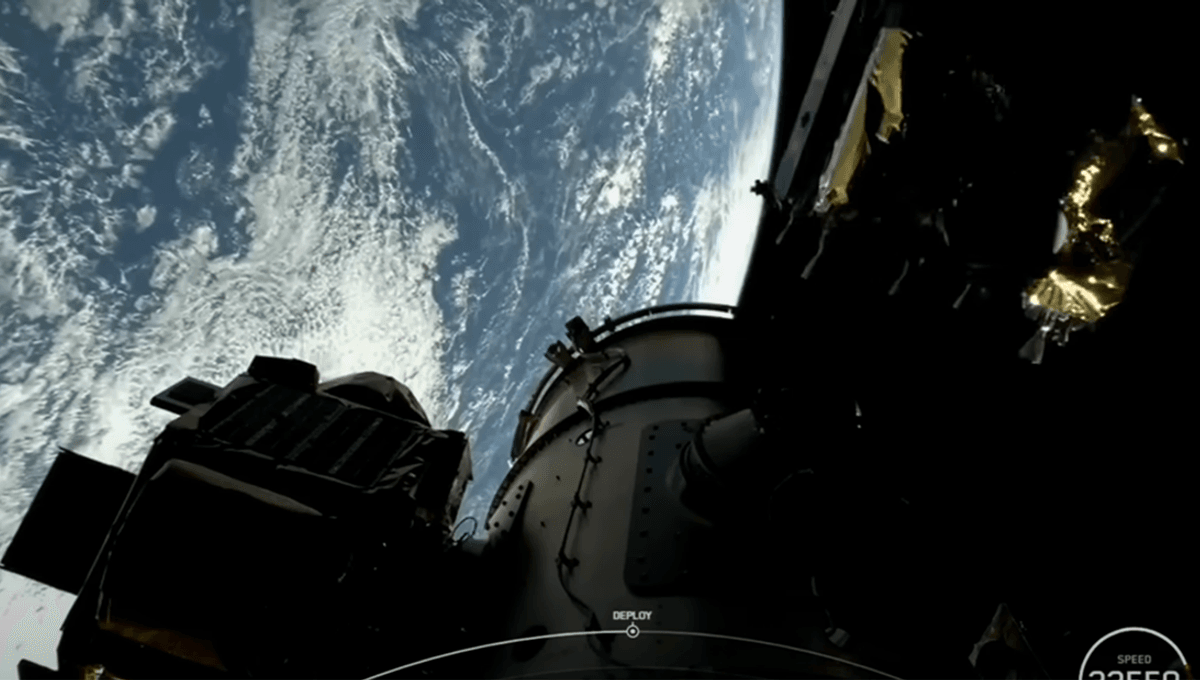
NASA’s Lunar Trailblazer mission is in jeopardy, after the US space organization lost track of the spacecraft on its way to the Moon.
ADVERTISEMENT
Part of NASA’s Small Innovative Missions for Planetary Exploration (SIMPLEx) program, the small, low-cost Lunar Trailblazer mission is an attempt to map different forms of water on the lunar surface. The goal was to get a better look at the Moon’s water cycle, as well as scope out water that could potentially be extracted during crewed missions.
“While it is known that water exists on the lunar surface, little is known about its form, abundance, or distribution. The water may be locked inside rock and regolith – broken rock and dust – or it may collect as surface water ice inside the Moon’s permanently shadowed craters,” NASA explains of the mission. “In cold shadows, water molecules may also settle for short periods as frost: When the Sun moves across the sky during the lunar day, the shadows move, cycling these water molecules into the Moon’s exosphere and moving them to other cold places where they can settle once more as a frost.”
While orbiting the moon, the dishwasher-sized spacecraft was supposed to take a closer look at craters in the Moon’s south pole, which may host cold spots that have not been touched by sunlight for potentially billions of years. Unfortunately, with these smaller, low-cost missions, NASA knew that there is a trade-off in terms of risk.
“To maintain a lower overall cost, SIMPLEx missions have a higher risk posture and lighter requirements for oversight and management. This higher risk acceptance allows NASA to enable science missions that could not otherwise be done,” NASA explains. “To make the spacecraft’s four-to-seven-month trip to the Moon […] as efficient as possible, the mission’s design and navigation team has planned a looping trajectory that will use the gravity of the Sun, Earth, and Moon to guide Lunar Trailblazer to its final science orbit — a technique called low-energy transfer.”
Unfortunately, shortly after leaving Earth on board a SpaceX Dragon rocket and separating on February 27, the spacecraft fell out of communication with NASA. Since then, NASA has been trying to figure out what the problem is, as well as track down the craft using ground-based observatories and the space agency’s Deep Space Network.
Looking at telemetry data sent before the loss of signal, as well as ground-based radar data collected on March 2, the team believes that the spacecraft is in low power mode, and slowly spinning its way through space. While that’s not ideal, the spacecraft may resume communications with Earth again, should it tumble into a position where its solar panels receive more sunlight.
ADVERTISEMENT
While it has missed its planned opportunity to engage its thrusters and put it on course for lunar orbit, NASA is looking into alternative trajectory correction maneuvers they could use should the spacecraft spring back to life.
“The Lunar Trailblazer team has been working around the clock to re-establish communications with the spacecraft,” Nicky Fox, associate administrator of the Science Mission Directorate at NASA Headquarters in Washington, said in an update. “NASA sends up high-risk, high-reward missions like Lunar Trailblazer to do incredible science at a lower cost, and the team truly encapsulates the NASA innovative spirit — if anyone can bring Lunar Trailblazer back, it is them.”
For now, NASA continues to try to track the spacecraft, and look out for any potential signals it sends our way.
Source Link: NASA's Lunar Trailblazer Lost And Likely Tumbling On Its Way To The Moon